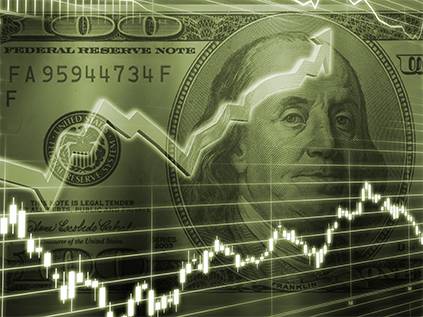The US dollar was largely steady on Monday, ahead of Tuesday’s deadline for Washington and Beijing to reach an agreement on tariffs, as markets also awaited a key US inflation report that could help determine whether the Federal Reserve will cut borrowing costs next month.
The dollar index edged down less than 0.1% to 98.164, after falling 0.4% last week. Against the yen, the US currency traded at 147.39 yen, down 0.2%. Japanese markets were closed on Monday for the “Mountain Day” holiday.
The euro rose less than 0.1% to $1.1652, while the British pound was flat at $1.3462.
The dollar remains under pressure as investors adjusted their expectations for Fed rate cuts following weak US jobs and manufacturing data.
Fed officials have expressed growing concern over the labor market, signaling openness to cutting rates as soon as September.
A slowdown in inflation could strengthen bets on a rate cut next month, but signs that President Donald Trump’s tariffs are fueling higher prices might prompt the Fed to keep policy unchanged for now.
Francesco Pesole, currency strategist at ING, said: “It’s important to note before tomorrow’s data that the threshold for a hawkish surprise is now higher,” adding that a 0.3% month-on-month increase in the core Consumer Price Index would still give the Fed room to cut rates, given the deterioration in the labor market.
Economists polled by Reuters expect the core CPI to have risen 0.3% in July, pushing the annual rate up to 3%.
Money markets are pricing in about a 90% chance of a rate cut next month, with a total of 58 basis points in cuts expected by year-end — implying two quarter-point moves — and roughly one-third odds of a third cut.
Potential changes in Fed leadership have also influenced the dollar recently, as Trump prepares to appoint policymakers aligned with his dovish stance, including a new Fed chair when Jerome Powell’s term ends in May.
Trade negotiations remained in focus, with the August 12 deadline set by Trump to reach a US–China deal approaching, particularly regarding chip policy.
Chris Weston, head of research at Pepperstone in Melbourne, said: “The market has fully priced in the likelihood of an extension,” predicting a new 90-day truce.
As part of efforts to reach an agreement and avoid imposing tariffs of several hundred percent on goods, a US official told Reuters that chipmakers Nvidia and AMD have agreed to allocate 15% of their China sales revenue to the US government in exchange for semiconductor export licenses.
Weston added: “I don’t know if that’s good or bad, but if it leads to a resolution, it wouldn’t be a bad outcome,” noting that “if it means Trump asks for 15% and then we close the matter, it might not be too bad.”
The offshore yuan fluctuated between gains and losses, last trading at 7.1854 per dollar, after weekend data showed China’s producer prices fell more than expected in July, while consumer prices remained unchanged.
The Australian dollar held at $0.6520 ahead of Tuesday’s central bank decision, where a 25-basis-point cut to 3.60% is widely expected after weaker-than-forecast second-quarter inflation and unemployment hitting its highest level in three and a half years.
Cryptocurrencies surged, with Bitcoin climbing to $122,308, nearing its July 14 record of $123,153.22, after Trump signed an executive order on Thursday allowing cryptocurrencies to be included in US retirement accounts.
Ethereum also jumped to $4,346, its highest level since December 2021.


